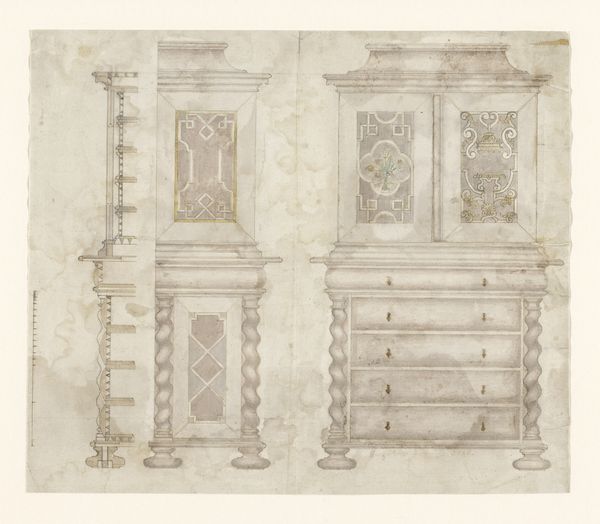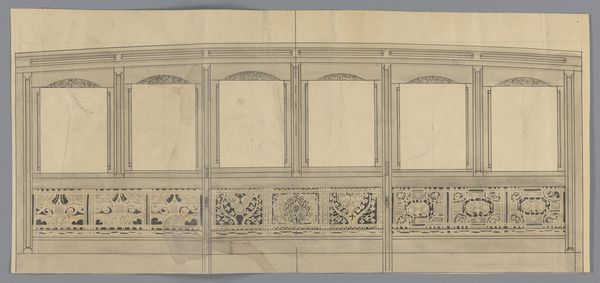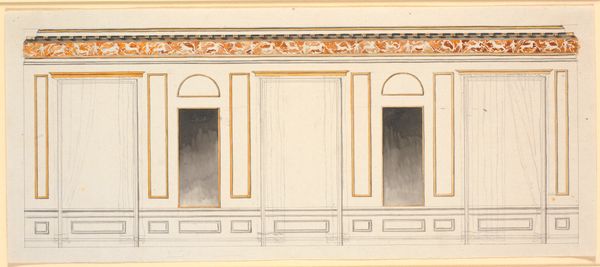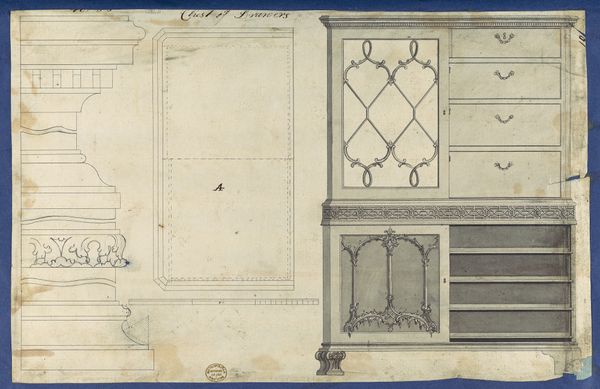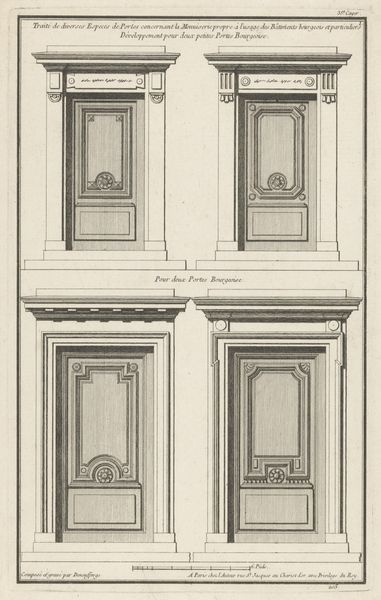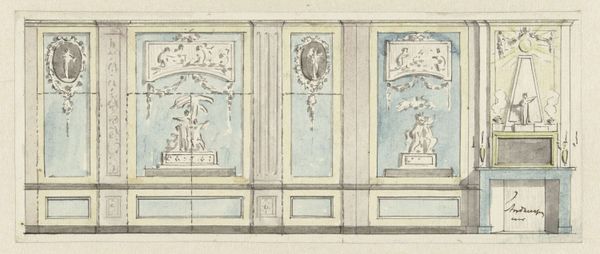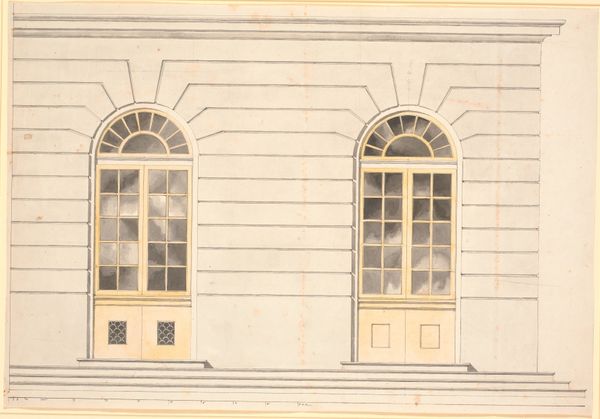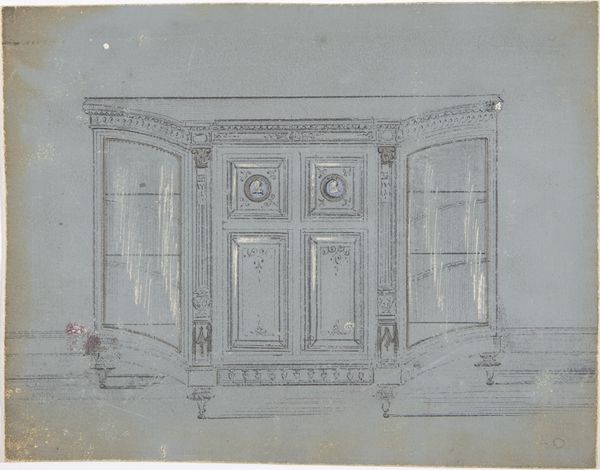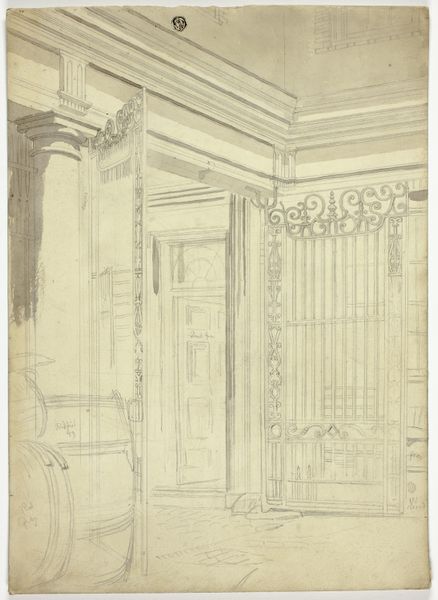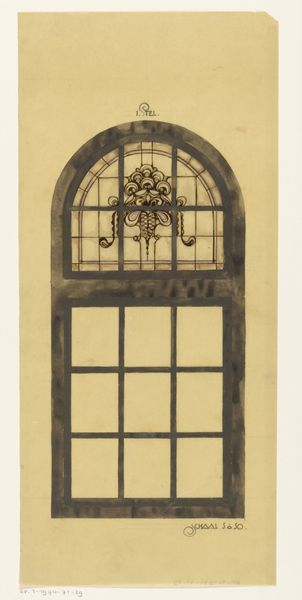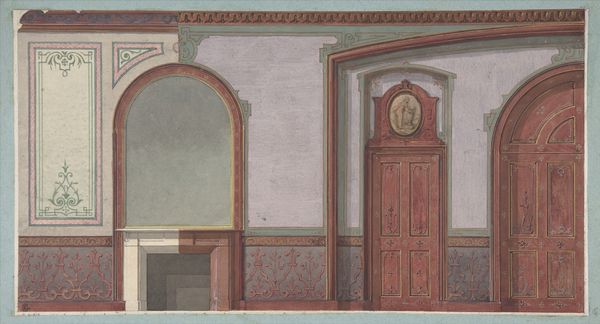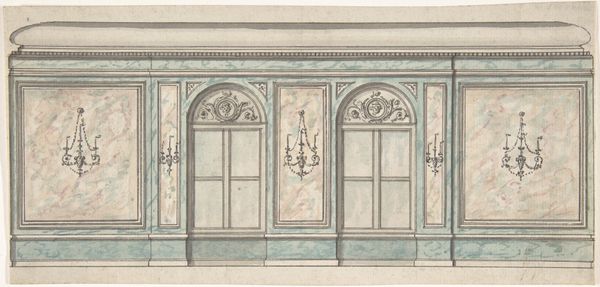
Ontwerp voor wand met dubbele deuren van een mailboot 1874 - 1945
0:00
0:00
drawing, mixed-media, pen, architecture
#
drawing
#
mixed-media
#
art-nouveau
#
pen
#
architecture
Dimensions: height 282 mm, width 458 mm
Copyright: Rijks Museum: Open Domain
Editor: Here we have Carel Adolph Lion Cachet's mixed-media drawing, "Ontwerp voor wand met dubbele deuren van een mailboot," created sometime between 1874 and 1945. The design feels so ornate and stylized, typical of Art Nouveau, but the muted colors give it a rather serious tone. How do you interpret the symbolism within this design, particularly concerning its connection to a mail boat? Curator: This is fascinating! Notice how the architectural design, with its flowing, organic motifs, creates a feeling of transit and communication. These botanical motifs and curvaceous lines symbolize growth, transformation, and journey. Do you see the consistent visual theme around connection through design and form? Editor: I see the curves and natural elements, but I’m not immediately getting the “mail boat” connection. Shouldn’t there be anchors, or waves, something more directly nautical? Curator: Not necessarily direct! Remember, the Art Nouveau style often favoured subtlety. Think of it less literally: the flowing forms could evoke the motion of the sea, the continuous exchange implied by international mail transit, and, given that it's an interior design, these forms might be echoed elsewhere onboard to evoke a feeling of the ocean's boundlessness. Editor: Ah, so the style *itself* creates a mood and subtle reference. So the imagery isn't only *on* the door, but inherent in the door, right down to the frame itself? Curator: Precisely. Lion Cachet uses this flowing, organic aesthetic as a symbolic vehicle to evoke the constant movement and connection associated with mail ships and global exchange. Think of how the style invites constant exchange through curvilinear motifs and forms! What are your final thoughts now? Editor: It's remarkable to see how every aspect, from form to function, is intertwined. A great lesson in art history to understand not only explicit symbols but underlying imagery! Curator: Exactly, and these are concepts we continue to unravel when we revisit periods, places, and faces within artworks across time.
Comments
No comments
Be the first to comment and join the conversation on the ultimate creative platform.
